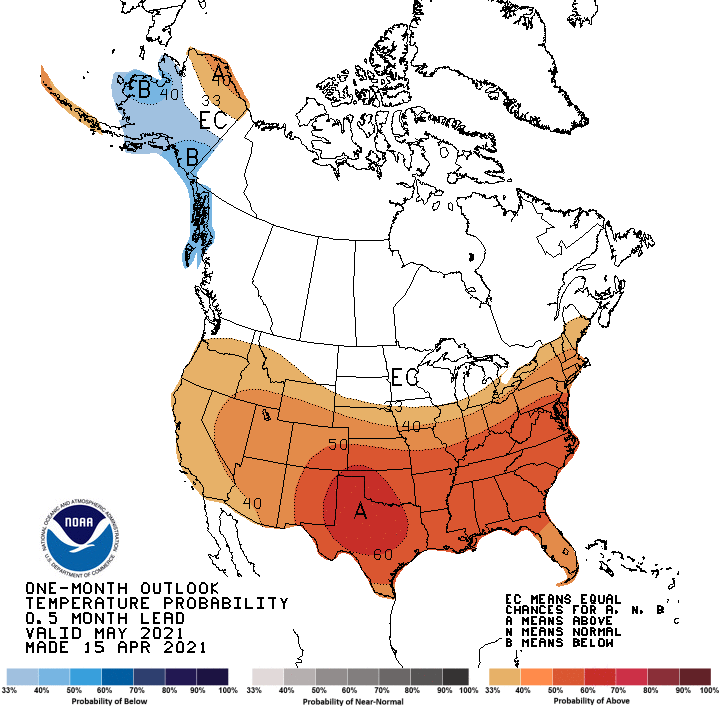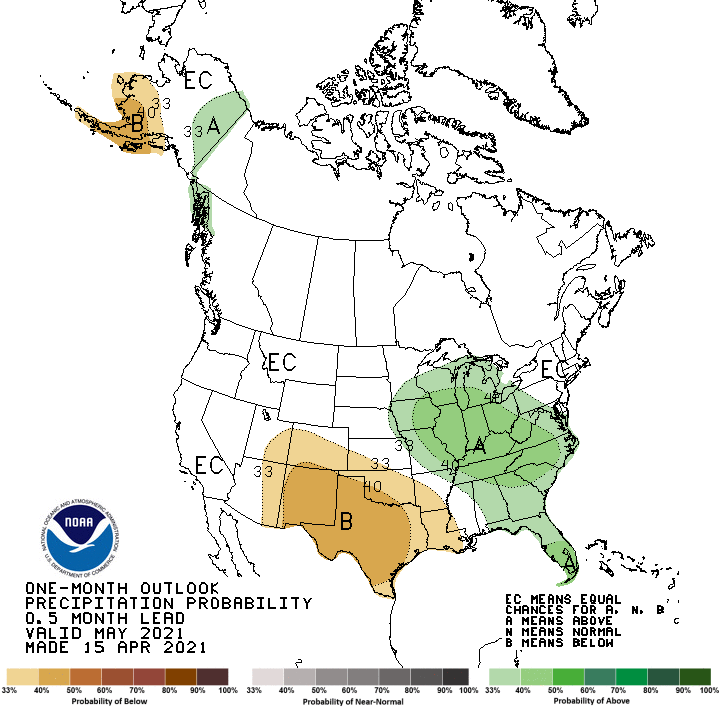
Most ski resorts will be closed come May, but a small few will remain open for your shredding pleasure. Here’s the weather that will accompany your spring skiing…
Above normal temperatures are favored for the southern two-thirds of the CONUS and for much of the Northeast and generally weaker above normal temperature probabilities from the Rockies westward. Probabilities of warmer than normal conditions are the greatest across the Southern Plains. Confidence in above normal temperatures diminishes farther to the north. This cold MJO signal directly conflicts with dynamical model guidance, which favors above-normal temperatures across almost the entire CONUS. Equal chances (or EC) of above, near, or below-normal temperatures are indicated across most of the northern tier of the CONUS. Enhanced probabilities of above-normal temperatures are also absent for much of Alaska. Deep snow cover, lingering sea ice, and cold ENSO signals will likely combine to counteract recent trends toward above normal temperatures across much of the state. Enhanced probabilities of below normal temperatures are indicated for much of southern mainland Alaska and the Alaska Panhandle. Above normal temperatures are favored for parts of northern Alaska where trends are the strongest.
Above normal precipitation is favored for parts of the Corn Belt eastward across the Ohio Valley to the Mid-Atlantic. Enhanced above normal precipitation probabilities also extend southward to include much of the Southeast. Conversely, below normal precipitation is favored across the Southern Plains. Farther to the west, uncertainty is high as the dry pattern forecast by dynamical model guidance directly conflicts with a strong wet signal produced by MJO composites from northern California to parts of the Central and Northern Rockies. Equal chances of below, near, and above-normal precipitation are indicated across most the western CONUS. Confidence is somewhat higher across Alaska as dynamical model guidance and ENSO composites generally agree on a dry signal across the southwestern Mainland and the Alaska Peninsula. Conversely, above-normal precipitation is favored across parts of the Alaska Panhandle and eastern mainland Alaska due to a combination of wet signals from ENSO composites, trends, and dynamical model guidance.
